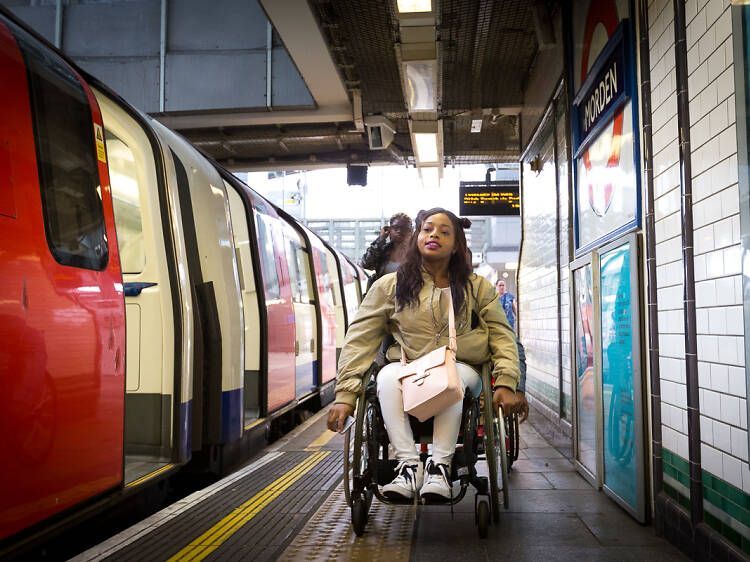A recent study in Europe has identified user groups who are vulnerable to exclusion from urban mobility systems: children, the cognitively impaired, the elderly, people with low incomes, people with reduced mobility (due to mental, cognitive, psychic, physical, sensorial disabilities), street vendors, students and women. Many of these people are part of so-called “hard-to-reach” groups, and often do not have their voices heard in urban mobility planning and decision making. Solutions that are developed by vulnerable users, for vulnerable users are guaranteed to respond directly to their particular needs. Very few urban mobility plans address these issues, but the Washington DC Bus Priority Plan and the Edinburgh Urban Mobility Study provide good examples for assessing social inclusion problems and developing solutions.
n
Children
Most cities have not been designed to accommodate children and conditions in many places are unwelcoming and unsafe for them. Children (including babies and toddlers), their families and care givers need accessible, inviting, and safe mobility options and public spaces. They should have efficient and sustainable choices to move around their cities more reliably and predictably, with less waiting time. Children and young adults benefit from independent mobility, with autonomy to walk, cycle, and take transit, and they should feel safe using streets. Caregivers should be able to be independent when moving with young children. Cities should provide opportunities for outdoor play, inspiration, personal development, and interpersonal connections.
n
The Elderly
Older adults face outdoor mobility challenges due to age-related changes and problems linked to the transportation system. Older adults may be more vulnerable to the challenges of their residential environment as they tend to travel less often outside their own neighborhoods than do younger adults. Urban mobility infrastructure (such as number and width of traffic lanes, size and extensiveness of sidewalks, traffic calming devices) influence safety and attractiveness and ultimately decisions about whether or not to walk. The elderly have specific travel needs that can affect their mode of transportation choices. In order to encourage the maintenance of activity and the adoption of sustainable travel practices during aging, it is crucial to understand what factors influence the mobility of the elderly.
n
Gender Equality
Women’s travel patterns differ from men’s in many ways: women are likely to travel shorter distances than men, are more likely to use public transportation, engage in more nonwork travel outside rush hours and make more multi-stop trips, run household errands and escort other passengers (usually children or dependent elderly persons). Women perceive public transport, pavements and footpaths, streetlights, and parks as more important in enabling their everyday life than men. More women than men use public transport and they heavily depend on these systems for their mobility needs. Many women feel exposed to physical aggression, sexual harassment or other forms of unwelcome behaviour in public transport and in moving around urban areas on foot.
n
Low-Income Groups
Low-income people and neighborhoods are isolated from good transportation, hindering employment opportunities and access to goods and services. In most cities, the lowest paid workers have the longest commutes because high housing costs have forced residents to live farther away from the city’s centre. In addition, low-income workers with service and manual jobs tend to commute to areas that are dispersed around the city far from the public transport systems. To resolve these problems, transit services need to serve slums and poor neighborhoods and transit fares need to be affordable.
n
People with Reduced Mobility
People with reduced mobility include:
- those with physical disabilities (e.g. those who have trouble walking or require a wheelchair or walker to get around) who require physically accessible services;
- those with sensory disabilities (e.g. blind, visually impaired, deaf or hard of hearing) who require sensorially accessible services; and
- cognitively impaired people (e.g. those with developmental delays, difficulties with information processing and memory impairments) who require in-transit signs, info boards, audio announcements not hindered by background noise, and accessible ticketing machines.
n
Street Vendors
Street vendors are perceived as impeding the flow of pedestrians and vehicles. While street vendors may contribute to congestion, there is increasing recognition that mixed-use sidewalks and parcels of land add vibrancy and security to cities. Street vendors offer a wide range of goods and services in convenient and accessible locations. They work in many different types of public spaces (designated vending areas, market areas, sidewalks, medians and transport terminals) at different times of day, on different days of the week and during different seasons of the year. Some traders move from one vending post to another over the course of the workday, and sometimes a single vending post can be the workplace of several different individual vendors. Understanding this very unique market and developing improvement measures requires a participatory approach that aims to capture informal workers’ perceptions, ideas and experiences in their own words.
Street Vendor Consultation and Mapping
Detailed street vendor mapping and consultation is an essential first step in developing improvement measures. Often official planning processes do not know or show what is happening informally, and thus there is no documented information on the scale and size of vending activities. Vendor mapping and consultation is best undertaken with or by vendor associations, who understand the daily and weekly fluctuation of trade. It should consider the numbers of vendors at different times, the types of goods sold, the location of facilities (e.g., storage, toilets, taps, etc.).
Inclusive Urban Design Solutions
Opening up new pedestrian routes, widening walkways and creating pedestrian streets can ease congested street trading conditions and provide improved trading opportunities. These spaces can accommodate the construction of trader kiosks, vibrant informal food courts, small-scale manufacturing activities and storage facilities.








